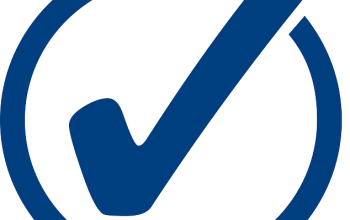When transferring your out-of-state vehicle to a new state, you must register it and complete the DMV vehicle verification process, which includes a VIN Inspection. This involves confirming your car's Vehicle Identification Number (VIN) matches its title and history records at one of the designated DMV VIN inspection locations. These sites are authorized to perform accurate VIN verifications, ensuring no discrepancies or fraudulent activity is present. It's crucial to prepare all necessary paperwork, such as out-of-state registration and previous inspection records, in compliance with your new state's DMV VIN check requirements. After a successful VIN verification by a trained inspector, you can proceed with the DMV vehicle registration process, legally establishing your vehicle's presence in your new state. Familiarize yourself with the specific DMV VIN check requirements and associated costs for each state to ensure a smooth transition and avoid any potential delays during your vehicle's registration.
When relocating across state lines with your vehicle, understanding the DMV vehicle verification process is crucial for a seamless transition. This article demystifies the VIN inspection requirements and steps necessary to ensure your out-of-state vehicle aligns with DMV standards. We guide you through locating authorized DMV VIN inspection sites, navigating the VIN verification process, and comprehending associated costs for a hassle-free registration in your new state. Whether you’re relocating for work or seeking a fresh start, our comprehensive coverage of DMV registration inspection protocols will set you on the right path.
- Understanding the DMV VIN Inspection Process for Out-of-State Vehicles
- Locating Authorized DMV VIN Inspection Sites Across Different States
- Complying with DMV Vehicle Verification Requirements and VIN Number Verification Steps
- Navigating VIN Verification Costs and Registering Your Vehicle with the New State DMV
Understanding the DMV VIN Inspection Process for Out-of-State Vehicles
When transitioning to a new state with your out-of-state vehicle, it’s crucial to ensure that your car is properly registered under your new residence. A key step in this process is undergoing the DMV VIN inspection. The Vehicle Identification Number (VIN) inspection is a critical component of the vehicle verification process mandated by most states. This inspection serves as a means to confirm that the vehicle’s VIN number matches the records associated with the title and history of the car, which is vital for title and registration purposes in your new state.
The DMV VIN inspection locations are typically facilities authorized by the Department of Motor Vehicles (DMV) within your area. These designated spots are equipped to perform the VIN number verification accurately. The inspection itself involves a trained inspector meticulously checking the VIN on your vehicle against the title and registration documents you provide. This ensures that there is no discrepancy or fraudulent activity regarding the car’s history, ownership, or specifications. To facilitate this process, it’s important to gather all necessary documentation, including your out-of-state registration, previous inspection records, and any other paperwork that may be required by the DMV VIN check requirements of your new state. Once the VIN verification process is completed, you will be cleared for DMV vehicle registration in your new state, avoiding potential legal complications associated with an unverified vehicle. Understanding the DMV VIN inspection process and preparing accordingly will help streamline this transition, ensuring that your vehicle’s move across state lines is as smooth and hassle-free as possible.
Locating Authorized DMV VIN Inspection Sites Across Different States
When transitioning to a new state with your vehicle, it’s imperative to comply with the DMV vehicle verification requirements, which include a VIN number verification process. This process is crucial for confirming that your car’s Vehicle Identification Number (VIN) is legitimate and matches the DMV’s records. The first step in this process is locating an authorized DMV VIN inspection site within your new state of residence. Each state has a network of certified facilities where a VIN inspection can be conducted by professionals trained to recognize authentic vehicle details. These DMV VIN inspection locations are often clearly marked on the DMV’s official website, making it easier for you to plan your visit. It’s recommended to search for ‘DMV VIN inspection locations’ specific to the state you’re moving to, as requirements and acceptance of VIN verification can vary from one region to another. Additionally, the DMV registration inspection might have particular standards or additional documents required for out-of-state vehicles, so it’s advisable to familiarize yourself with the DMV VIN check requirements beforehand. This due diligence ensures a smoother transition and helps avoid any potential delays in registering your vehicle in your new state. Knowing the specific VIN verification process and associated costs ahead of time is key to navigating this aspect of relocation smoothly and efficiently.
Complying with DMV Vehicle Verification Requirements and VIN Number Verification Steps
When transitioning to a new state with your vehicle, adhering to the DMV vehicle verification requirements is paramount to ensure a seamless registration process. The VIN number verification is a critical step in this journey, as it confirms that your car’s identification number matches the official records and is compliant with the DMV standards. This process typically involves a thorough inspection of the VIN by an authorized DMV VIN inspection location. These locations are equipped and certified to perform the verification correctly, ensuring that the vehicle has not been tampered with or reported stolen, which can affect registration eligibility. The DMV VIN check requirements vary by state, so it’s essential to familiarize yourself with these specifications before initiating the process.
To initiate the VIN verification process, you should locate a certified DMV VIN inspection site near your new residence. These inspection sites are strategically placed for accessibility and convenience. Once at the location, a qualified inspector will meticulously examine your vehicle’s VIN, checking it against the title and registration documents to ensure they match. This step is crucial for maintaining legal compliance and avoiding any potential complications that could arise from discrepancies. After successful verification, you will be able to proceed with registering your out-of-state vehicle in your new state, ensuring a legitimate and compliant registration status. The VIN verification process not only simplifies the transition but also acts as a safeguard against fraudulent activities, promoting road safety and compliance with motor vehicle regulations.
Navigating VIN Verification Costs and Registering Your Vehicle with the New State DMV
When relocating with an out-of-state vehicle to your new residence, one of the critical steps in integrating your car into its new environment is undergoing the DMV vehicle verification process, which includes VIN number verification. The Vehicle Identification Number (VIN) serves as a unique identifier for your vehicle and must be checked against DMV VIN inspection locations to ensure it aligns with their standards. This verification process is crucial for successful registration in your new state. Each state may have different requirements for the DMV VIN check, so it’s important to familiarize yourself with these beforehand. Typically, you will need to present your vehicle’s title and proof of insurance along with the results from a certified VIN inspection station. The cost for this service can vary depending on the state and the facility you choose; however, it is generally a nominal fee designed to cover the administrative and labor costs involved in the DMV VIN inspection process. It’s advisable to check your new state’s DMV website or contact them directly for specific VIN verification costs to avoid any unexpected expenses. Once you have the VIN verified at an authorized DMV VIN inspection location, you can proceed with the registration process. This involves submitting the necessary documents and payment for the registration fees as per the state’s guidelines. Completing these steps will ensure that your vehicle is legally registered and road-ready in its new home state. Remember to gather all required paperwork and understand the DMV vehicle verification requirements specific to your new state to streamline this transition and avoid delays.
When transitioning your out-of-state vehicle to a new residence, the DMV vehicle verification process is a critical step to ensure a seamless registration. Our article has demystified the VIN inspection requirements and highlighted the importance of adhering to the DMV VIN inspection locations and verification steps across different states. With this information, you are now well-equipped to handle the VIN number verification process and understand the associated costs, ensuring your vehicle’s smooth integration into your new state’s DMV system. Remember, a meticulous approach to the DMV registration inspection will save you time and hassle in the long run.



